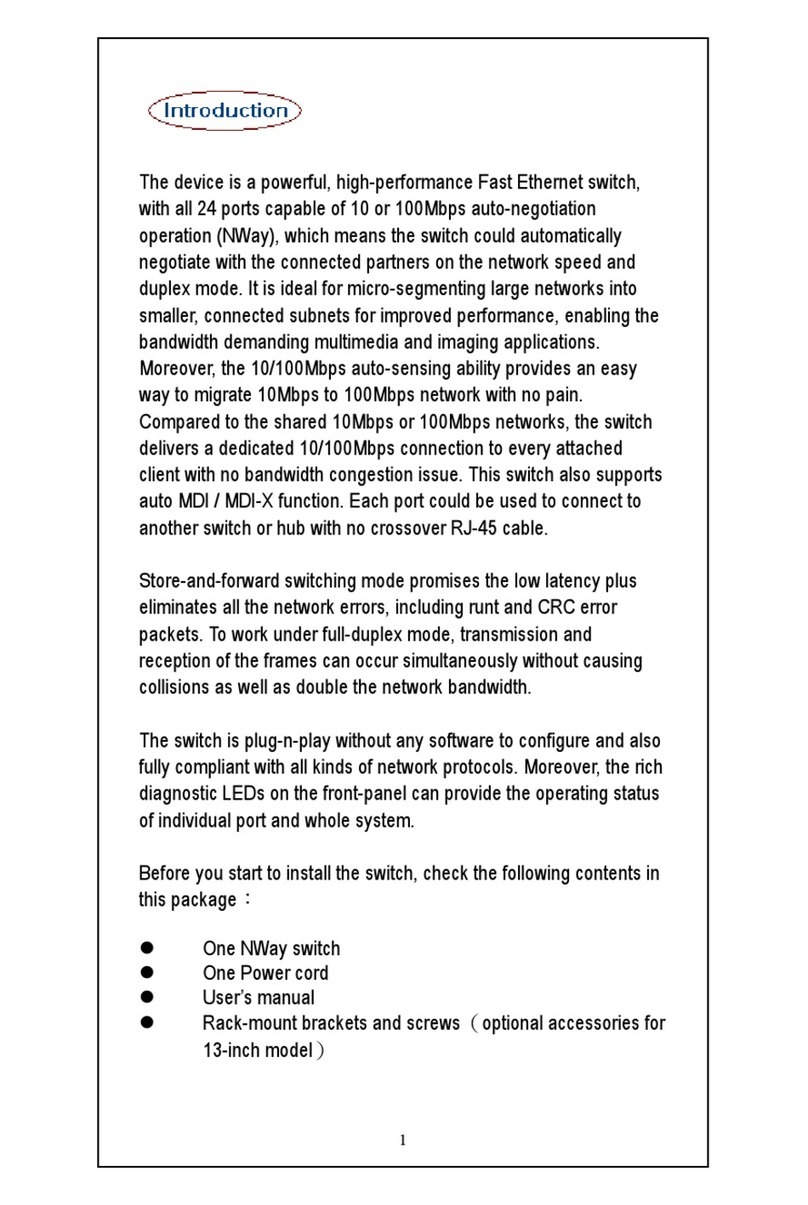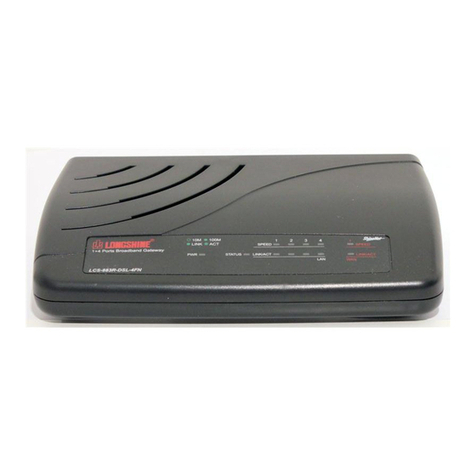6
Introduction
Cet appareil est un interrupteur Fast Ethernet puissant et hautement
performant, avec une capacité d’opérations d’auto négociation
(Nway) pour ses 16 ports, de 10 ou 100Mbps, ce qui signifie que
l’interrupteur est capable de négocier automatiquement avec les
partenaires connectés sur la vitesse du réseau et sur le mode
bidirectionnel. Il est idéal pour micro-segmenter de vastes réseaux
en des sous-réseaux plus petits et connectés entre eux, afin d’en
augmenter les performances, ce qui permet les opérations de
bande large multimédia et image. De plus, la capacité
d’auto-reconnaissance directe 10/100Mbps permet de passer
facilement d’un réseau de 10Mbps à 100Mbps. Comparé aux
réseaux partagés 10Mbps ou 100Mbps, l’interrupteur fournit une
connexion 10/100Mbps à chaque client rattaché tout en évitant des
problèmes de saturation de la bande. Cet interrupteur possède
également une fonction auto MDI / MDI-X. Chaque port peut être
utilisé pour être connecté à un autre interrupteur ou plate-forme
sans câble de croisement RJ-45.
Le mode d’interrupteur enregistrement et transmission permet un
faible temps d’attente et élimine toutes les erreurs de réseau, y
compris les groupes d’erreurs runt et CRC. Pour travailler en mode
bidirectionnel simultané, la transmission et la réception des
éléments peut être effectuée de façon simultanée sans provoquer
de collisions ainsi que de doubler la largeur de bande du réseau.
L’interrupteur est très facile à utiliser, sans aucun logiciel à
configurer ; il est aussi pleinement compatible avec toutes sortes de
protocoles de réseau. De plus, les DELs performants situés sur la
face avant fournissent des informations sur l’état du port individuel
et sur la globalité du système.
Avant d’installer l’interrupteur, veuillez vérifier le contenu du paquet
Un interrupteur NWay
Un câble de courant
Guide d’utilisation
Vis et système de montage sur socle
(Fixation au format rack 19" optionnellement pour modèle pas 19")




































